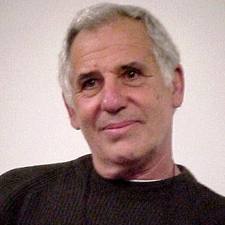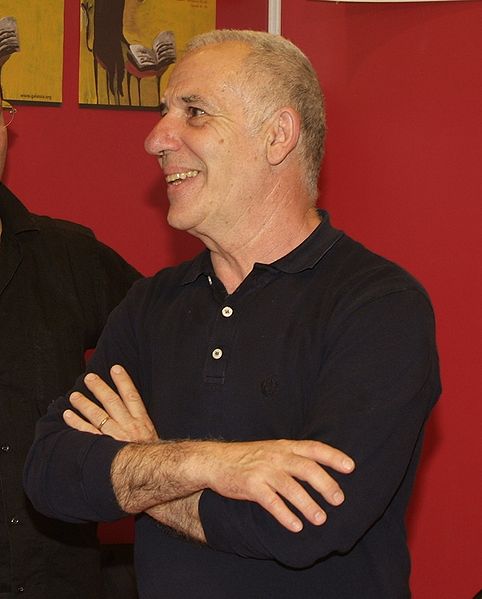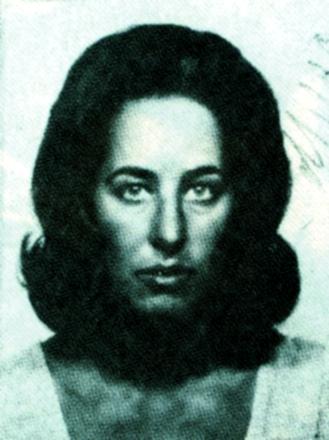<Back to Index>
- Leader of Brigate Rosse Renato Curcio, 1941
- Leader of Brigate Rosse Margherita Cagol, 1945
PAGE SPONSOR


Renato Curcio (born 23 September 1941) is the former leader of the Italian left wing militant organization, the Red Brigades (Brigate Rosse).
Born of an extramarital affair between Renato Zampa (brother of film director Luigi Zampa) and Yolanda Curcio, Curcio was born at Monterotondo, in the province of Rome. His early years were a difficult time for him and his mother, a housemaid, whose itinerant positions with families required long separations. In April 1945, Curcio's beloved uncle, Armando, a Fiat auto worker, was murdered in a Fascist ambush.
A poor student, Curcio failed several subjects in his first year of high school and had to repeat the year. He then resumed vocational training classes until moving to Milan to live with his mother. He enrolled in the Ferrini Institute in Albenga, where he became a model student.
On completing his degree in 1962, he won a scholarship to study at the new and innovative Institute of Sociology at the University of Trento, where he became absorbed in existential philosophy. During the mid 1960s, he gravitated toward radical politics and Marxism as a byproduct of his interest in existentialism and the self. By the late 1960s, he had become a committed revolutionary and Marxist theoretician.
According to Alessandro Silj, three political events transformed him from a radical to an activist: two bloody demonstrations at Trento and a massacre by police of farm laborers in 1968. During the 1967 - 69 period, Curcio was also involved in two Marxist university groups: the Movement for a Negative University and the publication Lavoro Politico (Political Work).
Embittered by his expulsion from the radical Red Line faction of Lavoro Politico in August 1969, Curcio decided to drop out of Trento and forego his degree, even though he already had passed his final examinations. Prior to transferring his bases of activities to Milan, Curcio married, in a mixed (Catholic - Waldensian) ceremony, Margherita (Mara) Cagol, a Trentine sociology major, fellow radical, and daughter of a prosperous Trento merchant.
In Milan, Curcio became a full fledged militant. The Red Brigades were formed in the second half of 1970 as a result of the merger of Curcio's Proletarian Left and a radical student and worker group. After getting arrested in February 1971 for occupying a vacant house, the Curcios and the most militant members of the Proletarian Left went completely underground and organized the Red Brigades and spent the next three years, from 1972 to 1975, engaging in a series of bombings and kidnappings of prominent figures. Curcio was captured, but freed by Margherita in a raid on the prison five months later. Three weeks after the dramatic prison escape, Margherita was killed in a shootout with the Carabinieri. Curcio was again captured by the authorities in January 1976, tried, convicted and imprisoned.
In April 1993 he was allowed to spend the day outside the jail in order to work as a writer; then in 1998 he was freed.
To date, Curcio has not expressed remorse for the activity of the Red Brigades.
In August 2007, French actress Fanny Ardant expressed her "admiration" for the Red Brigades leader as a "hero", adding she "considered the Red Brigades phenomenon to be very moving and passionate". For her comments the actress was sued in the Italian courts by Piero Mazzola, the son of an Italian policeman killed by the Red Brigades.

Margherita Cagol (8 April 1945 – 5 June 1975) was a former leader of the Italian left wing militant organization, the Red Brigades (Brigate Rosse). She was married to Renato Curcio.
She was born to a middle class family in Sardagna, Trentino, in the north of Italy. Her mother was a pharmacist and her father a prosperous merchant. In 1964 she enrolled in the faculty of Social Science at Trent University. She soon became involved with student movements, where she got to know Renato Curcio. Together with him she worked for the publication Lavoro Politico (Political Work). She graduated in 1969. She married in a Catholic ceremony Renato Curcio, after which the couple moved to Milan, where she intended to study for a further two years.
In Milan, the Curcios became full fledged militants. The Red Brigades were formed with Alberto Franceschini in the second half of 1970 as a result of the merger of Renato Curcio's Proletarian Left and a radical student and worker group. After getting arrested in February 1971 for occupying a vacant house, the Curcios and the most militant members of the Proletarian Left went completely underground and organized the Red Brigades and spent the next three years, from 1972 to 1975, engaging in a series of bombings and kidnappings of prominent figures. Renato Curcio was captured, but freed by Margherita in a raid on the prison five months later, on the 18 February 1975.
In April Cagol, Mario Moretti and Renato Curcio met in a house near Piacenza to discuss their strategy. The movement was growing and they needed further finance to continue the struggle. They decided to follow the example of the South American guerrillas and carry out a series of kidnappings, one of the victims being the industrialist Vallarino Gancia. He was chosen because he was very rich and lived in a region with which they were familiar. According to Renato Curcio, he had also financed a Fascist organization. He was kidnapped on 4 June while on his way to his villa in Canelli, near Asti, bundled into a transporter, and taken to the farmhouse (Cascina Spiotta) on the hills of Acqui Terme. This farmhouse had been purchased some time before by Cagol, and had been used by members of the Red Brigades from Turin. Renato Curcio did not take part in the operation; as a prison escapee, his picture had been published all over Italy, and it was considered too dangerous. Cagol, along with a companion, were left to guard Gancia. Later that evening Cagol phoned Renato to tell him that the operation had been a success. The following morning Carabinieri starting investigating farmhouses in the neighborhood. Cagol had been on watch during the night, and had gone to bed. Her companion, who took over the watch, fell asleep, and did not wake up until the Carabinieri started knocking at the door. Their escape route was blocked by the Carabinieri's car, so they decided to fight it out. In the ensuing gunfight, two police officers were killed, as was Cagol. Renato Curcio was again captured by the authorities in January 1976, tried, convicted and imprisoned.